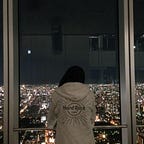[Book Review] How We Got to Now : Six Innovations That Made the Modern World
I recently read ‘How We Got to Now : Six Innovations That Made the Modern World’ by Steven Johnson. In my opinion, the author managed to curate the history of innovation in the form of well-written stories. These captivating stories and the lessons tied to them made this book one of my favorites.
Author Steven Johnson splits the book into 6 areas of innovation (Glass, Cold, Sound, Clean, Time and Light) that eventually transform all other fields after the innovation takes root. To give a glimpse of its content, I will summarize the first chapter of the book.
Before the 14th century, no one really paid attention to the glass until someone invented a printing press. Starting then, reading became commonplace and literacy rates rose dramatically. Simultaneously, a massive number of people realized that they were farsighted, creating a surge in demand for spectacles. Glasses became a piece of advanced technology that people would regularly wear on their bodies. This created an incentive for people to start experimenting with it.
It wasn’t long until someone found out that if he put two lenses in line with each other (instead of side by side like spectacles), it helps to magnify the object that they’re looking at. This then leads to the invention of the microscope, which then surprised humans with the existence of invisible bacteria and viruses available all around us.
The innovation of glass didn’t end there, but I think the paragraphs above portray very well how innovation usually begins life with an attempt to solve a specific problem. Once they get into circulation, they end up triggering other changes that would have been difficult to predict.
The author was consistent in delivering the same concept in every chapter, showing how the innovation of one ‘thing’ caused the hummingbird effect. Along the way, I also learned that innovation can greatly change humans’ life patterns. When lamps were not yet invented, our ancestors tend to split their sleep time into two cycles. When the sun goes down, everything turned pitch black and they would drift into their first 4 hours of sleep. They would then wake up to chat or have snacks before heading back into their second round of sleep. This helped them survived 12–15 hours in darkness. Their routine and lifestyle are completely different than ours (with a whole array of modern activities that could be performed and places to go to after sunset: from restaurants to movie theaters.)
In essence, this book has put me through a compelling journey and teaches me great lessons. I hope more people will read it.
